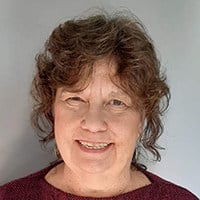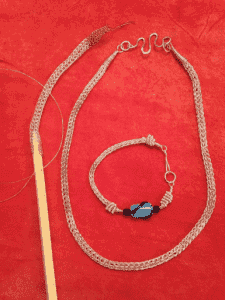Introduction to Viking Knitting

Beginner
Required Skills:
Class Length:
Half Day
Class Times:
Viking Knitting. Working with fine, flexible brass and/or copper wire, participants will learn the stitch used in Viking Knitting. Unlike traditional knitting, no needles are used and no prior experience is needed. Students will make small sections of knit that can be used in a bracelet, keychain or earrings. Techniques for using a drawn plate will be taught, and how to assemble jewelry items will be demonstrated. Participants can bring interesting beads to incorporate in their piece. Some beads and findings will be available for sale. The focus is learning the technique of Viking Knitting. The finished piece depends on the success of learning the technique.
Registration Fees:
For FTWG Members: $40
For all others: $40
Materials Fee:
None
Materials Fee Includes:
Wire, small findings, beads, handouts.
Registration Fees are paid when you register to attend the FTWG Conference. Materials fees are paid directly to the instructor at the beginning of class. You should plan to pay the materials fee in cash.
- Small wire cutter (nail clippers will work)
- Small needle nose jewelry or other small pliers
Barbara Cabral received her MA from the University of Akron researching the use of madder in Ohio coverlets. She has taught Contemporary Needle Arts at the University of Akron and in Tallin, Estonia, where she collected Estonian and traditional card-weaving textiles. She lectures on textile topics including Pictorial Needle Felting, Khmer Hol (Ikat), Natural Dyes, Sewing with Handwoven Fabric, Working with Lotus Fiber, and Estonian Knitting. Since the early 1980s, her work has been exhibited in Ohio and in Florida. In 2020, she received 1st place in the HGA fashion show Seasons of the Smokies for a woven and needle-felted cloak. In 2022, her woven and needle-felted vest and hat were also included in the HGA Convergence fashion show. She now shares these award-winning techniques in workshops and lectures. Raising silkworms since 2013 led her to travel to Thailand and Cambodia where she visited textile venues and met with weavers, dyers, golden silkworm farmers, and conservators. She continues to travel to Cambodia to study Khmer Hol (Ikat) and enjoys presenting workshops & lectures on Khmer weaving.



